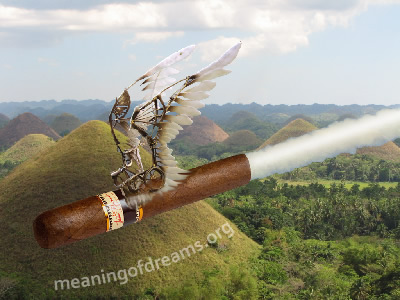Like a movie or a play, all dreams need a stage setting, a physical place for your dreams to occur. The dream scenery and stage properties are made up of the symbols used to give meaning to your dream, put your dream into a context where the action can have a significant meaning. Usually your dream backdrops will follow pretty much the same rules as the scenery in waking life, though they may not be the same colors and set out the same way, they wont always be upside down for instance – most of the properties of the dream will behave the same as they do in waking life too, for the most part people will be people who you interact with, cars are things that transport you places and so on.
Bizarre Scenery
There are always exceptions to every rule in life, this can be doubly so in dreams; every now and again you may be faced with scenery that seems surreal, not following the normal patterns – people floating by like balloons, trees walking along the street and rivers of gold may flow uphill. Inside the dream all these things may seem perfectly normal, it’s not until you wake up that you realize how bizarre it all was.
The bizarre dreams are quite usually the ones that stay in your mind for the longest, you may remember dreams such as these from years past; their significance is usually very personal and varying depending on the individual. Freud thought that dream scenery represented your unexplored unconscious territory, or your repressed sexual longings.
Scenery Interpretation
Freud said that dreaming of curvy landscapes with soft, round shapes and narrow indentation was symbolic of the female form; hills for breasts, belly or womb; and dark passageways or doorways represent the vagina. He said that upright or elongated objects such as mountains, planes, trains, monoliths and so on represent the phallus, or male sexual organ – the penis. Though he did also say, “sometimes a cigar is just a cigar”.
 Jung had very different views and ideas on dream interpretation, many of which are more acceptable today than Freud’s; Jung did not believe that so many things were connected with male and female symbolism, but he did believe that dream scenery was very important when trying to interpret the meaning of your dream. A dream that is set outside in the icy mountains has a very different ambiance to one that is set in a tiny room for instance. It is thought by some that dreams based in artificial settings, like an office or elevator, are more symbolic of one’s personality; where a dream in a natural setting in the countryside or wilderness is more in touch with your soul and deeper emotions.
Jung had very different views and ideas on dream interpretation, many of which are more acceptable today than Freud’s; Jung did not believe that so many things were connected with male and female symbolism, but he did believe that dream scenery was very important when trying to interpret the meaning of your dream. A dream that is set outside in the icy mountains has a very different ambiance to one that is set in a tiny room for instance. It is thought by some that dreams based in artificial settings, like an office or elevator, are more symbolic of one’s personality; where a dream in a natural setting in the countryside or wilderness is more in touch with your soul and deeper emotions.
The Ambiance of Dream Scenery
As well as the physical appearance of the dream scenery’s importance, the overall mood or feeling connected to it is of great significance too. Different landscapes evoke different and sometimes powerful emotions in different individuals, a mountain scene may be truly awe-inspiring to some; where others may be affected by the complexity of an intricate man-made building. The scenery may behave differently in your dream than you’d expect it to in real life, melting away at the edges like Dali’s clocks in his painting, ‘Persistence of Memory’.
Sometime the scenery can feel like it has a persona of its own, where walls pulsate with happiness or sadness, spoons become angry with you. It’s important to consider that dream scenery, unlike stage scenery, is not there as a mere backdrop for the action; it is an integral part of your dream, as vitally important as any of the other elements of your dream that are trying to convey a message to you.
